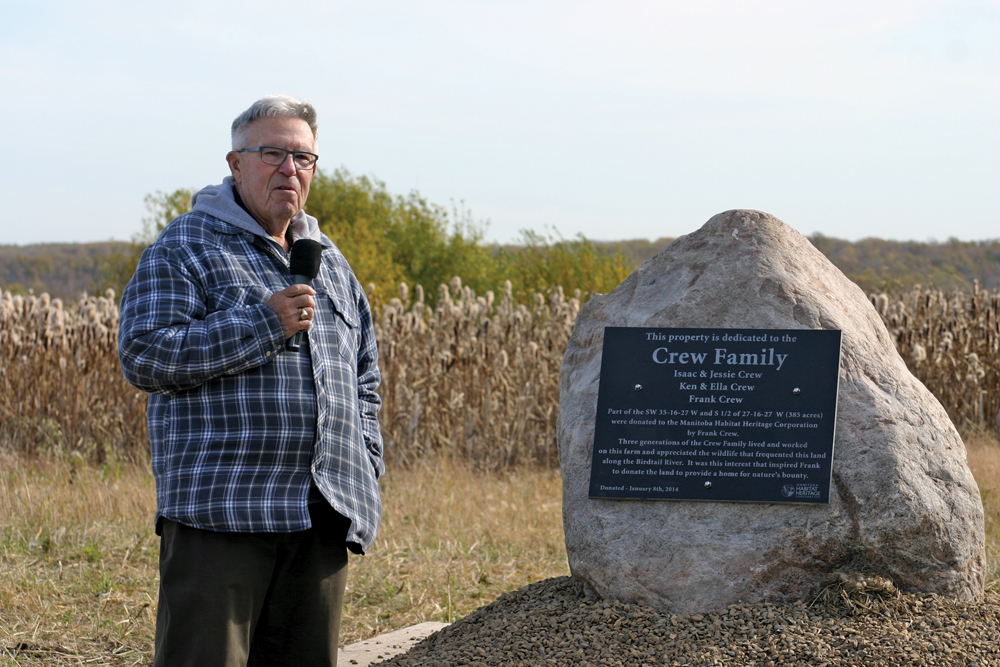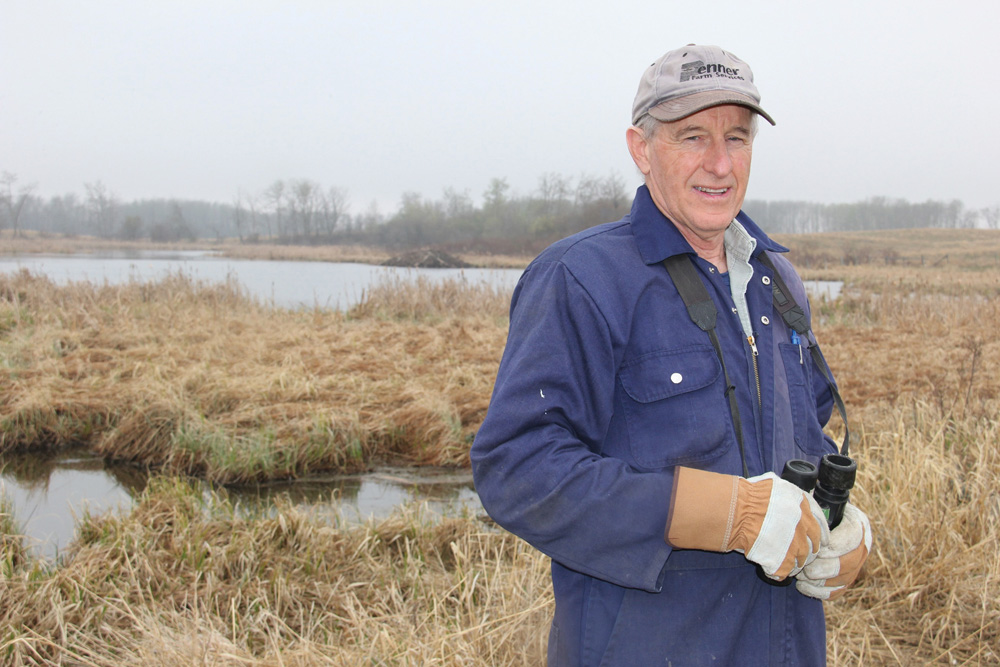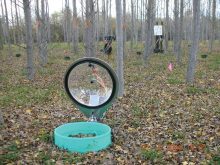Have you ever wondered what your place will look like long after you are gone?
Well, that thought crossed the minds of Shirley and Ted Ross and they decided not to leave anything to chance.
“There is quite diverse wildlife and plant life on our property,” said Shirley, a landowner near Roseisle. “We didn’t like the possibility of it not being this way after we are gone.”
To ensure that the property remained in its natural state in perpetuity, Shirley and her husband Ted, decided to protect it with a Conservation Agreement (CA). They contacted the Manitoba Habitat Heritage Corporation (MHHC) to start the process.
Read Also

Giant Canada geese have gone wild in Manitoba
Giant Canada geese are seemingly everywhere and can be fine table fare for local hunters, but 70 years ago, they were borderline extinct.
“This CA protects the riparian corridor situated along a very diverse stretch of natural habitat,” said Al Bourrier, the MHHC habitat conservation specialist in Killarney. In addition to protecting valuable wildlife habitat, their land also helps to improve water quality by slowing run-off, filtration and contributing to groundwater recharge.
CAs are a form of easement and a tool that allows landowners to permanently protect the habitat on a portion of their property for future generations. They continue to hold title to the land and enjoy all the other benefits of land ownership.
“I have been around here a long time and seen land deforested and wetlands done away with,” Shirley said. “It would be a real shame if that was what happened here. We wanted to make sure it stays as natural as possible.”
The area protected by this CA is situated in a rugged natural valley located between Roseisle and St. Lupicin, which is ecologically diverse and has a variety of plants and wildlife. For example, huge mature trees including elm, ash, oak, birch, maple and aspen grow along this rugged valley property. Wildlife is also very diverse.
“We have had coyotes in the yard eating apples,” laughs Shirley. “Once we had a moose in full velvet. “ Deer, raccoons, porcupines, wild turkeys, and a wide variety of songbirds are all common.
Years back, this valley region earned a reputation for attracting people seeking a peaceful and harmonious lifestyle. Looking across the rugged, yet beautiful, valley it is easy to understand the attraction.
Needless to say the quality and diversity of the local landscape, kept virtually intact by the local people, was part of the attraction and contributes to the quality of life and the lifestyle enjoyed by the citizens along the valley. Much of the habitat here remains intact, due to the foresight of local landowners.
For Shirley and Ted, their interest and love for the valley runs deep. Their home is situated adjacent to the place where her grandparents lived and her father’s retirement home. She visited here frequently as a child growing up and eventually, in 1971, purchased a quarter section. Shirley and Ted made their permanent home here in 1999.
The CA hasn’t changed much for the Ross family. They continue to own the property and they are developing walking trails for their personal enjoyment. As well they recently completed a woodlot management plan to ensure that the forest is properly managed.
The woodlot plan, developed by Manitoba Agro Woodlot Program staff, recommends harvesting the mature aspen on seven acres of their 114-acre CA. Good management is part of the long-term plan.
Now that dust has settled and there has been time to re-evaluate the decision to permanently protect their property, Shirley is certain they have made the right decision.
The big difference is the peace of mind in knowing their precious place is protected and that they are doing the right thing for the right reason. While they benefit by keeping the surrounding area natural, everyone benefits from clean water and a healthy environment.
“Absolutely it was the right decision, there is no downside,” she said. “It‘s a really good feeling to think that you can still keep one tiny little green part of the world.”
For more information on CAs, contact a Manitoba Habitat Heritage Corporation office in Minnedosa (867-6032), Reston (877-3162), Shoal Lake (759-4220) or Killarney (523-5522). MHHC, with a mandate to conserve and restore habitat, is a provincial Crown corporation that reports to the Manitoba Department of Water Stewardship.














